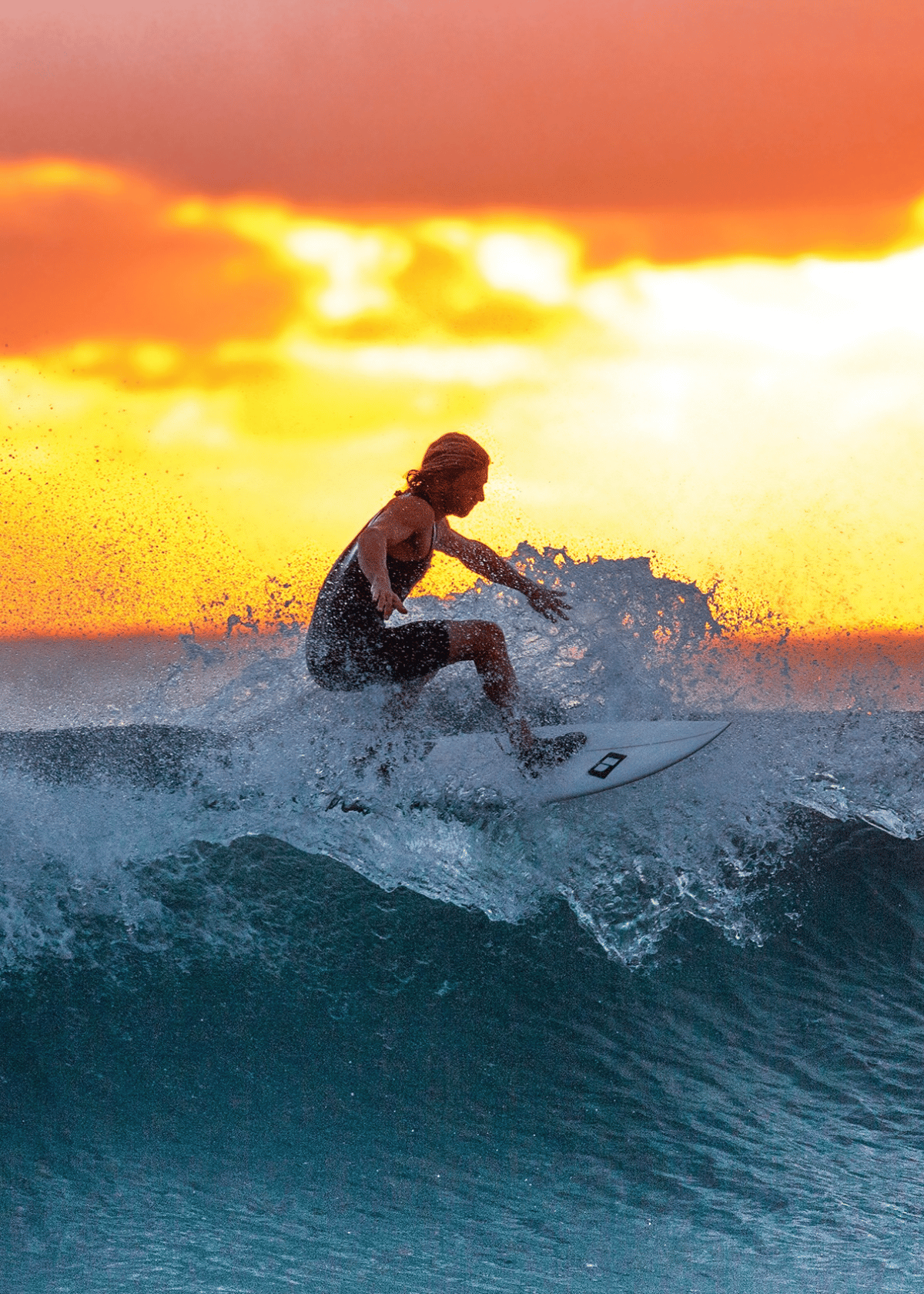Ever tried surfing with a side of lobster-red sunburn? Not the most pleasant experience, right? Welcome to the world of "Sunscreen For Surfing," where we tackle the waves and UV rays like a pro. In this article, we dive deep (pun intended) into the best sunscreens tailored for surfers – from water-resistant SPF powerhouses to eco-friendly options that won't harm our beloved oceans. So, whether you're a seasoned wave-rider or a surfing newbie, stick around to discover how to keep your skin protected while enjoying the thrill of the surf!

Catch the Wave, Not the Burn: Your Guide to Sunscreen For Surfing
So, you fancy a golden tan to show off your surfer vibes? We get it! But remember, tanning is like that misleading wave – it seems all fun and games until you wipe out with skin damage, premature aging, or even worse, skin cancer. Now, we're not here to rain on your surfing parade, rather, we're here to introduce you to your new best friend - sunscreen! Let's dive into how this magic potion can help you enjoy the sun without turning into a well-done steak.
The Magic Behind Sunscreen
Think of sunscreen as your personal bodyguard against UV rays. This mighty cream blocks those harmful rays, reducing your chances of sunburn by up to 72%! But it's not foolproof. Imagine sunscreen as a tight-knit net; some tiny UV rays might still sneak through, causing minor tanning.
You'll find different types of sunscreens on the shelves, each with their unique protection powers. Physical sunscreens are like a sturdy wall, using zinc oxide or titanium dioxide to block UV rays. On the other hand, chemical sunscreens, containing oxybenzone or octinoxate, act more like a sponge, absorbing UV rays before they reach your skin. Planning to spend a whole day riding the waves? Go for a physical sunscreen!
Sunscreen 101: How to Apply
Applying sunscreen isn't rocket science, but doing it right can make a world of difference. Here's your crash course:
- Slather it on! Ensure every inch of exposed skin is covered, even those sneaky spots like behind your ears or the back of your neck.
- Keep it fresh! Reapply every two hours or after heavy sweating, swimming, or toweling off (because no one likes a half-baked surfer).
- Aim high with SPF 30+! SPF means "sun protection factor," the higher the number, the stronger the shield against UVB rays (the nasty ones causing burns).
Although sunscreen can't promise a 100% tan-free guarantee, it's your best bet for safe sun time. Round off your sun defense with sunglasses and hats and you're set to ride the waves without any sunburn woes!
Now, all you surfing enthusiasts out there, we've got you covered. We've surfed the web (pun intended) and found the best Sunscreen For Surfing, considering all vital factors such as SPF, broad-spectrum protection, water resistance, non-greasy feel, and reef-safe ingredients. Click on to find our top pick that ticks all these boxes, so you can hit the waves confidently, fully protected by a reliable sunscreen!
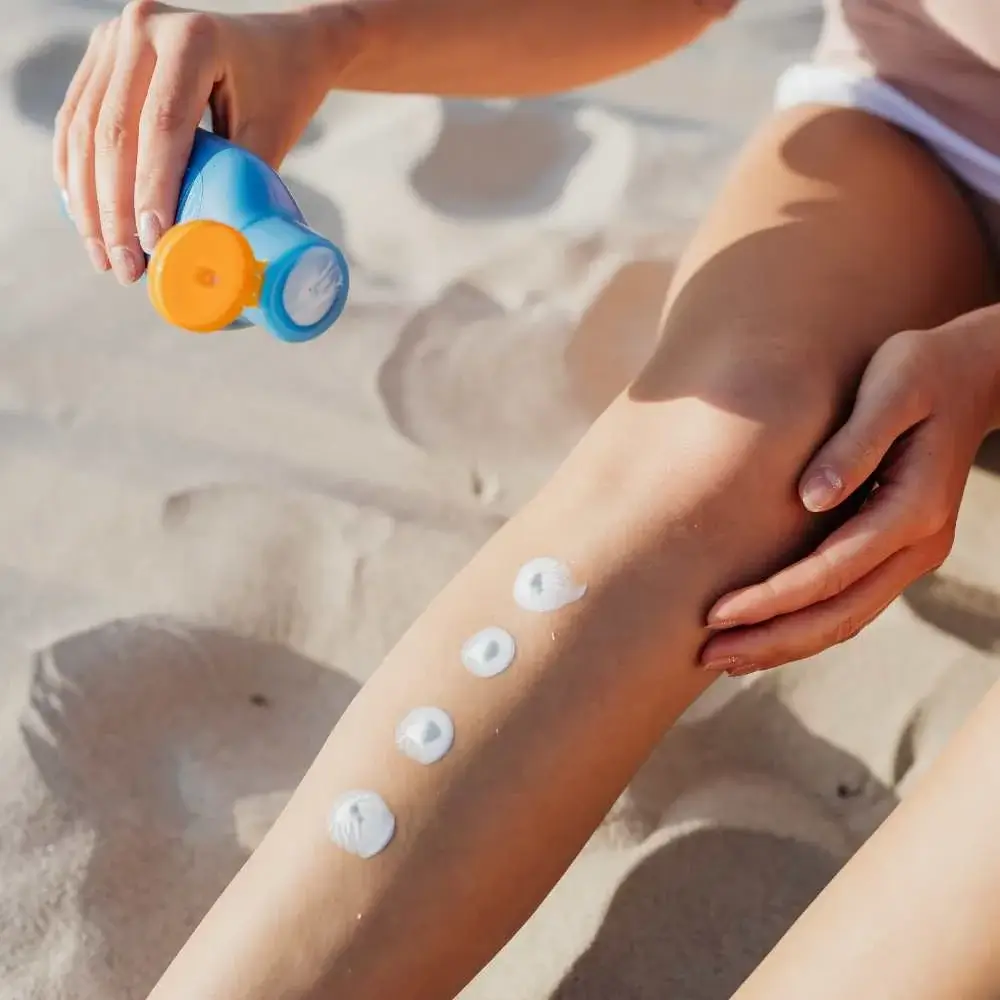
The Importance of Choosing the Right Sunscreen for Surfing
As a surfer, you're no stranger to the sun. In fact, it's part and parcel of the exhilarating experience. However, the importance of a trusty tube of "Sunscreen for Surfing" cannot be overstated. It's your invisible armor against the relentless UV rays, a silent sentinel that protects while you ride the waves.
Exploring the Types of Sunscreen Suitable for Surfing
When it comes to sunscreens, not all are created equal. Especially when it comes to surfing, you need to select a sunscreen that not only protects your skin but also withstands the harsh ocean conditions. Let's dive into the different types of sunscreens suitable for surfing.
Physical Sunscreens
Physical sunscreens, also known as mineral sunscreens, use active mineral ingredients like zinc oxide or titanium dioxide. They work by sitting on top of the skin and deflecting the sun's rays. The beauty of these sunscreens is that they start working immediately upon application. For surfers, this is a godsend. Imagine the scenario: the waves are perfect, and you can't wait to get in the water. With physical sunscreen, there's no waiting around; apply and you're good to go.
Chemical Sunscreens
Then we have chemical sunscreens. These contain organic compounds that absorb UV rays, convert them into heat, and then release them from the body. Unlike their physical counterparts, chemical sunscreens need about 20 minutes to become effective after application. So if you're the type who meticulously plans their surf sessions, a chemical sunscreen might just work for you.
Water-Resistant Sunscreens
When surfing, you're dealing with more than just sun exposure - there's also the constant contact with water. This is where water-resistant sunscreens come in. They are designed to stay on your skin longer, even if you're sweating or wiping out in the waves. However, remember that 'water-resistant' doesn't mean 'waterproof'. Reapplication is still necessary, especially after prolonged water exposure or towel drying.
The Bottom Line
Choosing the right "Sunscreen for Surfing" is crucial. It's an essential part of your gear, just as important as your surfboard or wetsuit. Whether you opt for a physical, chemical, or water-resistant formula, remember that the best sunscreen is the one you'll wear consistently. So find a product you love, and make sure to slather it on before you hit the waves. Your skin will thank you.

Factors to Consider When Choosing a Surfing Sunscreen
Surfing and the sun are a match made in heaven. But, as we all know, too much of a good thing can be harmful. That's where "Sunscreen for Surfing" comes into play. However, not just any sunscreen will do when you're riding the waves. Let's dive into the factors you need to consider when choosing the right sunscreen for your surfing adventures.
SPF Factor
First things first, the Sun Protection Factor (SPF). This number tells you how well the sunscreen can protect your skin from UVB rays, the kind of radiation that causes sunburn and contributes to skin cancer. Dermatologists recommend using a sunscreen with an SPF of 30 or higher for any extended outdoor activity, which definitely includes surfing.
Broad Spectrum Protection
While SPF covers you for UVB rays, you also need protection from UVA rays. These are more insidious, penetrating the skin more deeply and contributing to skin aging and wrinkling. A "Sunscreen for Surfing" should be labeled as 'broad spectrum', meaning it protects against both UVA and UVB rays.
Water Resistance
When you're spending hours in the water, water resistance is a non-negotiable. Look for sunscreens labeled as 'water-resistant'. They maintain their SPF protection after 40 or 80 minutes in the water. However, remember to reapply immediately after drying off or at least every 2 hours.
Environmental Impact
As surfers, we have a special relationship with the ocean. It's our playground, our sanctuary, our adrenaline rush. So it's only right that we choose a "Sunscreen for Surfing" that is also kind to the environment. Many sunscreens contain oxybenzone and octinoxate, chemicals known to harm coral reefs. Opt for a reef-safe sunscreen that uses mineral-based active ingredients like zinc oxide or titanium dioxide instead.
Skin Type
Just like skincare, your choice of sunscreen should also take into consideration your skin type. If you have sensitive skin, opt for a hypoallergenic and fragrance-free formula. For those with acne-prone skin, a non-comedogenic sunscreen that won't clog pores is a smart choice.
Wrapping Up
Choosing the right "Sunscreen for Surfing" isn't rocket science, but it does require some thought. Remember, the best sunscreen is one that offers sufficient protection, suits your skin type, respects the ocean, and is one that you'll use consistently. Happy surfing!
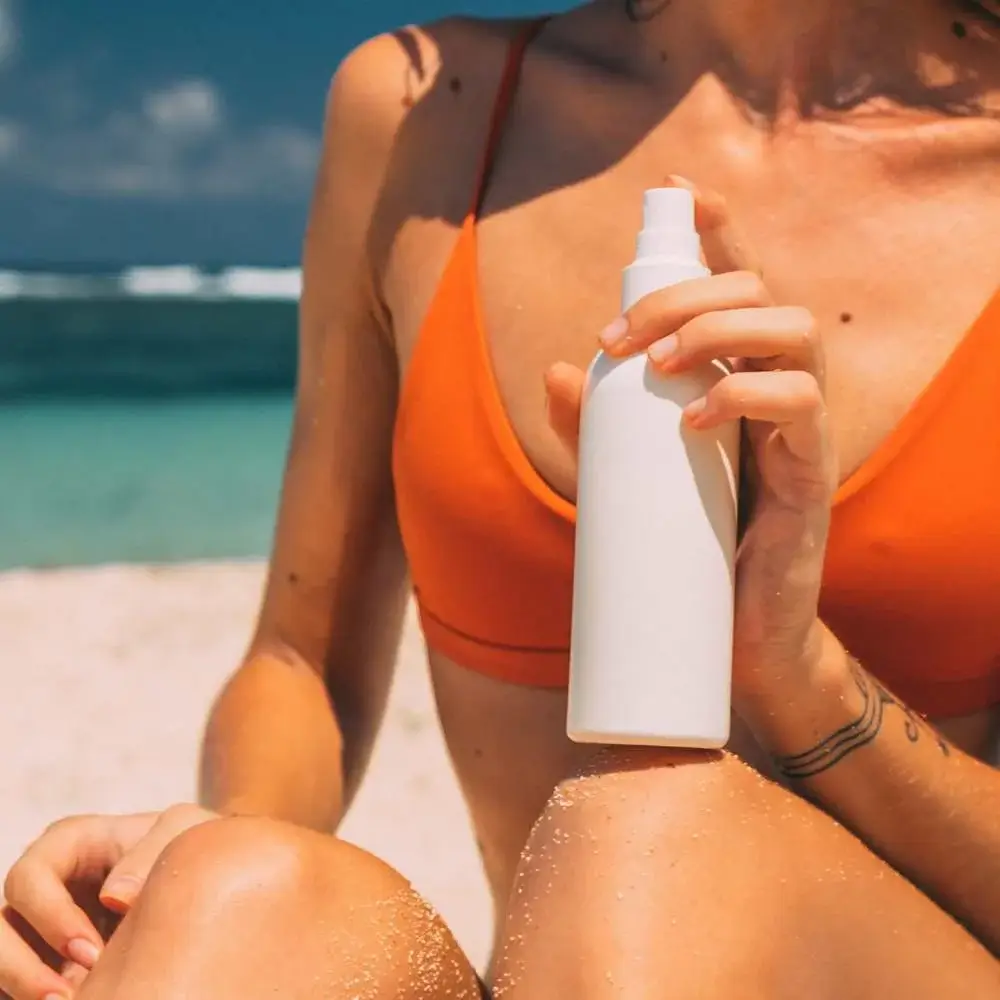
Mastering the Art of Applying Sunscreen for Surfing
"Sunscreen for Surfing" - three words that every surfer should live by. But, it's not just about having a tube of sunscreen in your bag; it's knowing how to apply it effectively that makes all the difference. So, let's break down the steps to ensure you're getting the best protection while riding those waves.
Step 1: Choose the Right Product
Before we get to the application, choosing the right product is half the battle won. Look for a broad-spectrum, water-resistant sunscreen with an SPF of at least 30. Remember to consider your skin type and opt for eco-friendly options whenever possible.
Step 2: Apply Before You Hit the Beach
The golden rule of sunscreen application is to apply it 15-30 minutes before you step into the sun. This gives the product enough time to bind to your skin and start working. So, make "Sunscreen for Surfing" the first thing you reach for when packing your beach bag.
Step 3: Use Enough Product
When it comes to sunscreen, less is definitely not more. Dermatologists recommend using a shot glass worth (about an ounce) to cover all exposed areas of the body. A thin smear just won't cut it if you want optimal protection.
Step 4: Don't Forget the Details
Remember to apply sunscreen to often overlooked areas like the tops of your feet, back of your hands, ears, and under the straps of your swimsuit or rash guard. And let's not forget about the face. A lip balm with SPF is also essential to protect your lips from getting chapped and burnt.
Step 5: Reapply, Reapply, Reapply
This might be the most important step of all. Sunscreen wears off, gets rubbed off, or washed off in the water. So, reapplication is key. Aim to reapply your "Sunscreen for Surfing" every two hours and immediately after you get out of the water or sweat heavily.
The Bottom Line
Applying "Sunscreen for Surfing" might seem like a chore, but it's one that pays off significantly. It's your best defense against harmful UV rays, premature skin aging, and skin cancer. So take the time to apply your sunscreen properly. Your future self will thank you!
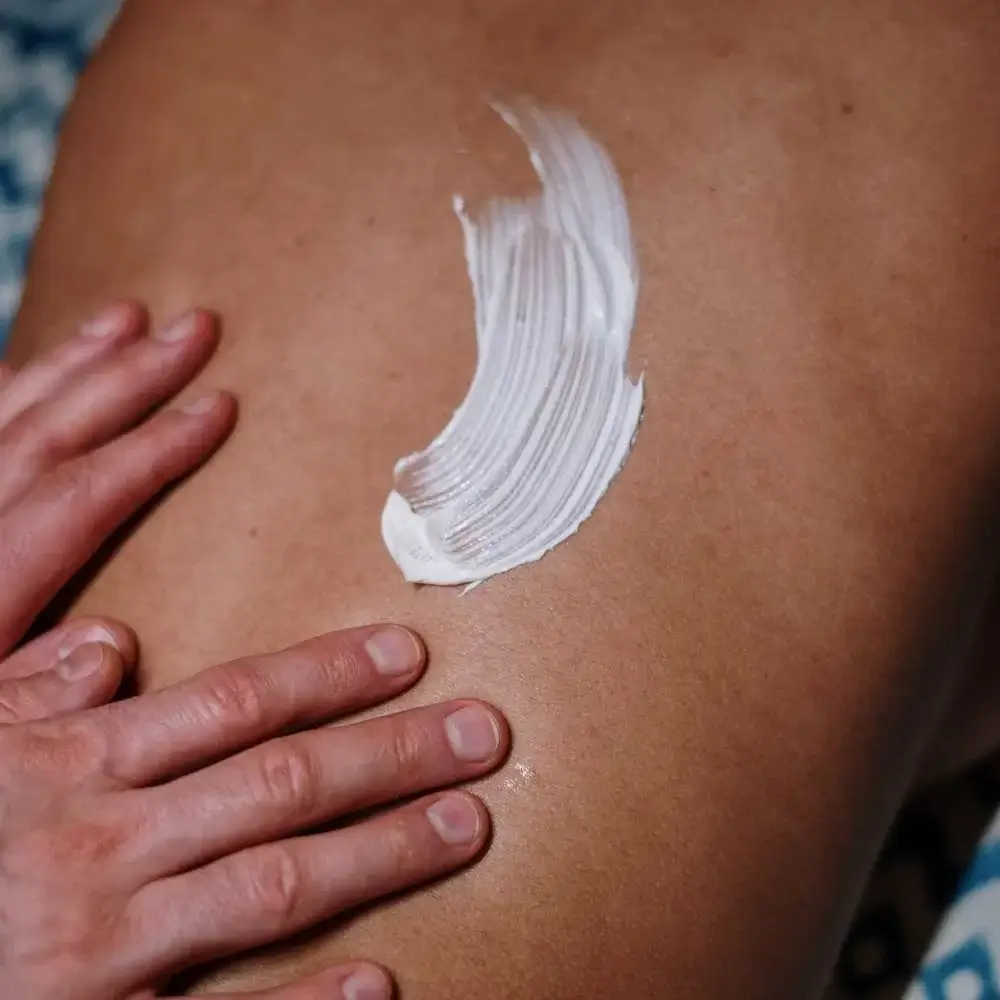
Understanding the Difference: Waterproof vs. Water-Resistant Sunscreen for Surfing
When it comes to "Sunscreen for Surfing", one of the first things you should look for is its water resistance. But here's where it gets tricky - the terms 'waterproof' and 'water-resistant'. They might sound similar, but there's a significant difference. Let's dive in and clear the confusion.
Water-Resistant Sunscreens
In the world of sun protection, 'water-resistant' is a term regulated by the FDA. A sunscreen labeled as 'water-resistant' has been tested to remain effective for up to 40 minutes while swimming or sweating. If it says 'very water-resistant', it can resist water for up to 80 minutes.
For surfers, this is an important distinction. Think about it - between paddling out, waiting for the perfect wave, and riding it back in, you easily spend more than 40 minutes in the water during each session. So, a 'very water-resistant' sunscreen would be a smarter choice.
Waterproof Sunscreens
Now, let's talk about 'waterproof' sunscreens. If you're thinking these offer even better protection, you'd be mistaken. In fact, the term 'waterproof' when it comes to sunscreens is misleading. No sunscreen is completely impervious to water. That's why the FDA has banned the use of this term on sunscreen labels. If you come across a product claiming to be 'waterproof', take it with a grain of salt.
The Bottom Line
Whether you choose a water-resistant or a so-called 'waterproof' sunscreen, remember that no product provides all-day protection. Regular reapplication is key, especially after being in the water. Make it a habit to reapply your "Sunscreen for Surfing" every two hours and immediately after each surf session. It might seem like a bit of a hassle, but your skin will thank you for it in the long run. After all, the best wave is always the next wave, and you want to be ready to ride it without risking your skin health.
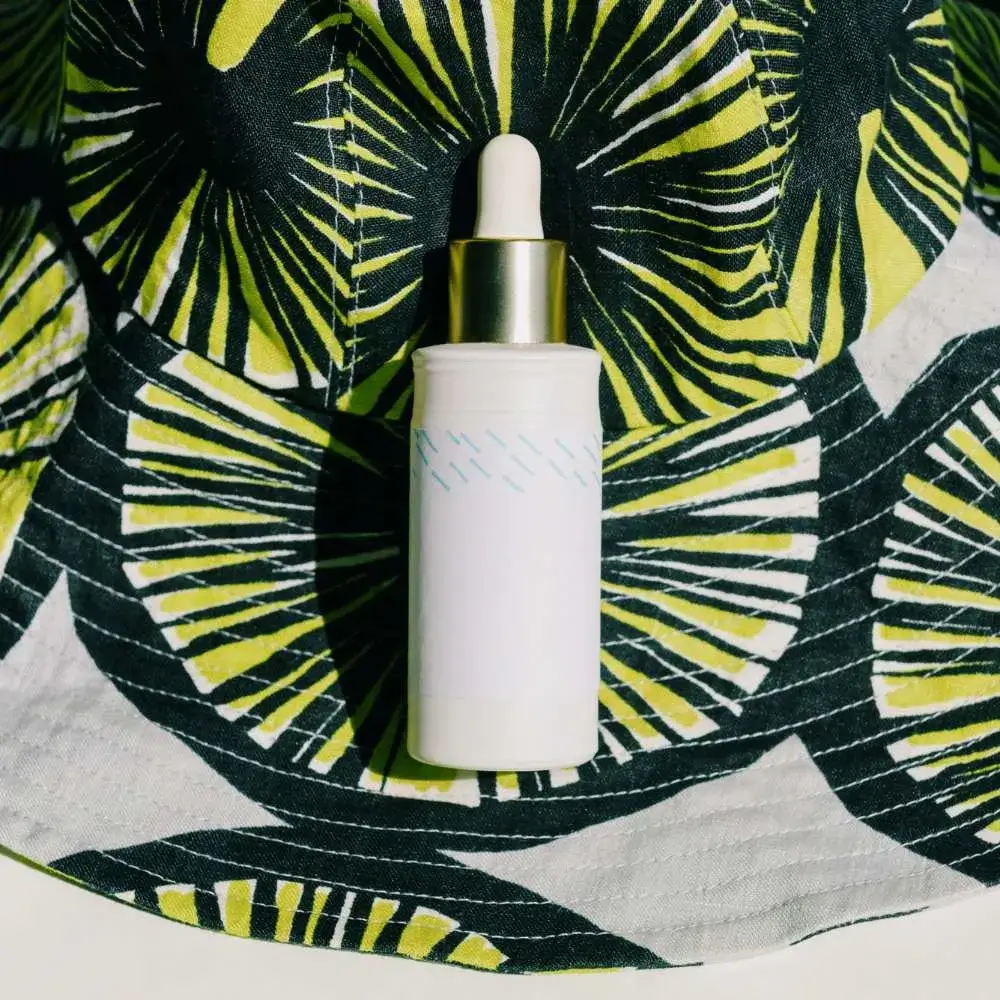
Essential FAQs on 'Sunscreen for Surfing'
What type of sunscreen do surfers use?
Well, surfers typically go for a "Sunscreen for Surfing" that's broad-spectrum (this means it fends off both UVA and UVB rays), has an SPF of 30 or higher, and is water-resistant. But wait, there's more! They also tend to favor mineral-based formulas that contain zinc oxide or titanium dioxide. Why, you ask? These star ingredients literally reflect the sun's rays off your skin like tiny mirrors. Plus, they're kinder to our oceans than chemical sunscreens. So, next time you're shopping for your surf-day sunscreen, channel your inner surfer and make sure these boxes are ticked!
What's the best sunscreen for surfers?
Generally speaking, the champion "Sunscreen for Surfing" would be a broad-spectrum, water-resistant one with an SPF of 30 or higher. But that's not all, folks! A true surfer's sunscreen also needs to be eco-friendly (we love our oceans, right?), so look for mineral-based formulas with ingredients like zinc oxide or titanium dioxide instead of harmful chemicals. And don't forget about your skin type! Whether you have sensitive, dry, or acne-prone skin, there's a sunscreen out there that matches your skin's unique needs. So, in essence, the best sunscreen for surfers is the one that offers great protection, respects the ocean, and feels good on your skin. Surf's up!
What sunscreen is OK for coral reefs?
Surfing the waves and saving the planet? Now that's a combo we love! If you're looking for a "Sunscreen for Surfing" that gives a thumbs-up to coral reefs, you'll want to steer clear of chemical sunscreens that contain oxybenzone and octinoxate. These pesky ingredients are known to cause coral bleaching - a big no-no for our underwater friends. Instead, opt for mineral sunscreens with active ingredients like zinc oxide or titanium dioxide, which are generally considered reef-safe. And bonus points if the sunscreen is biodegradable! So, next time you hit the surf, make sure your sunscreen is as kind to the coral reefs as it is to your skin. Happy surfing, eco-warriors!
Does sunscreen work in salt water?
The answer is a resounding "yes"! But, and this is a big 'but', not all sunscreens are created equal when it comes to salty sea adventures. For your "Sunscreen for Surfing" to withstand the ocean's waves, it needs to be water-resistant. This means it can keep up its sun-protecting game for either 40 or 80 minutes while you're making a splash. After that, it's time to reapply. So, whether you're riding the waves or doing your best floating starfish impression, remember to slather on that sunscreen regularly. Keep that surf glow going without the sunburn sting!
How do you apply sunscreen before swimming?
Well, applying "Sunscreen for Surfing" is as easy as one-two-three! First, you'll want to apply your sunscreen at least 15 minutes before you hit the water. This gives it plenty of time to dry and form a protective barrier on your skin. Now, how much should you use? Picture a shot glass (or two tablespoons) full of sunscreen - that's about the right amount for your entire body. And don't forget those often overlooked spots like your ears, the back of your knees, and your feet. Lastly, even if your sunscreen is water-resistant, make sure to reapply every two hours or immediately after swimming or sweating. So, slap on that sunscreen, dive in, and show those waves who's boss!


